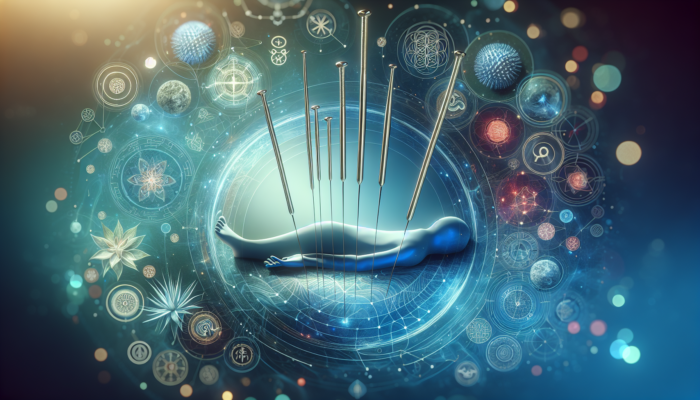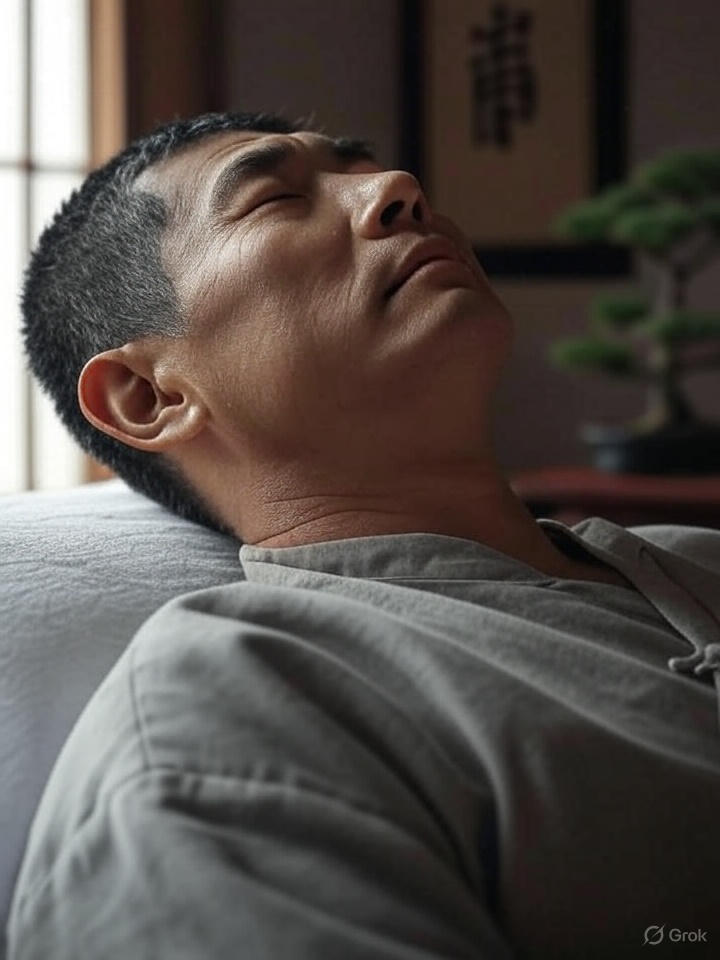Book Treatment Now

Acupuncture Mechanisms: A Basic Understanding Guide
Discover the Transformative Benefits of Acupuncture: Bridging Ancient Techniques with Modern Health Solutions
Acupuncture is a time-honored therapeutic practice deeply rooted in the principles of Traditional Chinese Medicine (TCM), with a legacy that spans more than 2000 years. This esteemed practice involves the meticulous insertion of ultra-fine needles into designated points on the body, with the goal of restoring balance and enhancing well-being by optimizing the flow of vital energy, known as Qi. Recognized as the lifeblood of all living organisms, Qi is vital for sustaining health and vitality; thus, achieving its balance is crucial. By comprehending and engaging with the flow of Qi, individuals can unlock extraordinary self-healing potentials and bolster their overall health.
In recent years, acupuncture has gained significant popularity as a credible alternative treatment within the evolving healthcare landscape. Increasing numbers of people are seeking acupuncture to address an extensive array of health issues, ranging from chronic pain management to alleviating stress and anxiety. This growing acceptance is largely due to its holistic approach, which not only addresses surface symptoms but also delves into the underlying imbalances within the body. In a medical environment often focused on immediate relief, acupuncture distinguishes itself by prioritizing comprehensive health restoration, making it an invaluable component of modern wellness strategies.
Diving Deeper into Acupuncture: Merging Eastern Healing Practices with Western Medical Insights
To fully grasp the efficacy of acupuncture, it is essential to consider both the traditional insights of Traditional Chinese Medicine (TCM) and the empirical findings of Western medicine. From the TCM perspective, acupuncture is thought to restore the flow of Qi through meridians—unseen pathways throughout the body that are interconnected with specific organs. This viewpoint emphasizes the profound connection between physical health and emotional well-being, suggesting that disruptions in Qi can manifest as diverse health challenges.
In contrast, Western medicine adopts a more scientific lens, concentrating on the physiological impacts of acupuncture. Research has demonstrated that acupuncture stimulates nerve endings, leading to the release of neurotransmitters and endorphins—critical elements in pain management and emotional stability. Despite their varying foundations, these perspectives converge, showcasing the extensive benefits of acupuncture. This synergy enhances our understanding of acupuncture and underlines its adaptability as a healing modality that integrates ancient wisdom with contemporary scientific exploration.
Exploring the Essential Role of Qi in Traditional Chinese Medicine (TCM)
 In the realm of Traditional Chinese Medicine (TCM), the concept of Qi is paramount, serving as the essence that sustains health and vitality. Commonly referred to as “life energy” or “vital force,” Qi is indispensable for the body’s optimal functioning, fueling essential physiological processes such as metabolism, immune response, and cognitive clarity. It is vital to maintain a smooth and ample flow of Qi for good health; any disruptions stemming from stagnation, deficiency, or blockage can lead to a myriad of health complications.
In the realm of Traditional Chinese Medicine (TCM), the concept of Qi is paramount, serving as the essence that sustains health and vitality. Commonly referred to as “life energy” or “vital force,” Qi is indispensable for the body’s optimal functioning, fueling essential physiological processes such as metabolism, immune response, and cognitive clarity. It is vital to maintain a smooth and ample flow of Qi for good health; any disruptions stemming from stagnation, deficiency, or blockage can lead to a myriad of health complications.
Qi traverses a complex network of meridians that function as conceptual channels, distributing this vital energy throughout the body. TCM identifies twelve primary meridians, each associated with specific organs like the heart, lungs, and kidneys, each possessing unique characteristics and functions. Achieving harmony in the circulation of these meridians is crucial; any disturbance in the flow of Qi can result in imbalances that affect both physical and emotional health.
Acupuncture serves as a vital therapeutic intervention within TCM, meticulously designed to regulate and restore the flow of Qi. By strategically placing needles at acupuncture points along these meridians, practitioners can eliminate blockages and alleviate energy stagnation. This therapeutic process not only promotes physical healing but also cultivates a heightened sense of overall well-being. The overarching goal of acupuncture is to harmonize the body’s energy, ensuring that Qi circulates freely and efficiently, which is essential for achieving optimal health and vitality.
Mastering Acupuncture Techniques: Restoring Balance and Promoting Qi Flow
Acupuncture is intricately designed to restore the body’s balance and facilitate the unobstructed flow of Qi through the precise insertion of needles into specific acupuncture points along the meridians. These points are meticulously chosen based on their association with particular organs and their relevance to the patient’s unique health concerns, as outlined by Traditional Chinese Medicine (TCM). By comprehensively understanding the intricate relationships between these points and the meridian system, acupuncturists can customize treatments to effectively address each patient’s individual needs.
The insertion of acupuncture needles triggers a cascade of physiological reactions that significantly influence the flow of Qi. When needles are introduced, sensory nerves in the skin and deeper tissues are activated, sending signals to the brain and spinal cord. This process leads to the release of neurotransmitters and endorphins—natural substances that play a key role in mood regulation and pain alleviation. The brain’s reaction to these signals often results in profound feelings of relaxation and emotional stability.
Moreover, the mechanical process of needle insertion can induce microtraumas in the surrounding tissues, activating the body’s intrinsic healing mechanisms. This promotes enhanced blood circulation, improves oxygen delivery, and facilitates the release of growth factors critical for tissue repair and regeneration. By emphasizing how acupuncture enhances Qi flow, we recognize its importance not only in symptom relief but also in promoting overall health by addressing both physical ailments and emotional disturbances.
Uncovering the Comprehensive Benefits of Acupuncture for Holistic Wellness
Acupuncture presents a broad spectrum of benefits that extend far beyond simple pain relief, playing a pivotal role in enhancing overall well-being. It is widely acknowledged for its effectiveness in alleviating various types of pain, including chronic conditions like lower back pain, osteoarthritis, and migraines. By targeting specific acupuncture points, this practice can modulate pain perception, decrease inflammation, and stimulate the body’s natural production of endorphins, crucial for effective pain management.
Additionally, acupuncture positively impacts the body, mind, and spirit. Many individuals report experiencing significant relaxation, tranquility, and improved mood following a session. This response is likely associated with the release of neurotransmitters such as serotonin and dopamine, which are fundamental in mood regulation and emotional health.
Furthermore, acupuncture can enhance overall well-being by boosting immune function, optimizing sleep quality, and alleviating stress and anxiety. By promoting balance in the flow of Qi, acupuncture addresses the root causes of various health issues, thereby increasing the efficiency of the body’s systems. Patients often notice heightened energy levels, improved digestion, and a renewed sense of vitality, empowering them to confront life’s challenges with greater resilience and strength.
Thorough Investigation of the Scientific Foundations of Acupuncture from a Western Perspective
Analyzing the Physiological Mechanisms of Acupuncture: A Comprehensive Scientific Review
In recent decades, Western medicine has devoted significant resources to uncovering the scientific mechanisms behind acupuncture through extensive research and empirical studies. While the traditional concept of Qi may not precisely align with Western scientific definitions, numerous studies illuminate the physiological responses triggered by acupuncture, providing insight into its mechanisms of action.
Research indicates that the insertion of acupuncture needles initiates a variety of physiological responses, activating anatomical structures such as nerves, muscles, and connective tissues. This mechanical stimulation leads to a series of localized and systemic reactions. At the insertion site, acupuncture induces microtraumas in the surrounding tissues, resulting in the release of inflammatory mediators and growth factors that activate the body’s natural healing response.
Moreover, studies confirm that acupuncture stimulates sensory nerves, transmitting signals to the brain and spinal cord, which assists in modulating pain perception and promoting the production of endorphins, serotonin, and other neurotransmitters with analgesic and mood-enhancing properties. The intricate interplay of biochemical, neurological, and biomechanical responses contributes to the therapeutic effects of acupuncture, suggesting its substantial role in enhancing health and overall well-being.
As research continues to delve deeper into the precise mechanisms through which acupuncture exerts its effects, a growing body of evidence supports its efficacy as a complementary approach for various health conditions. This expanding knowledge base underscores the importance of acupuncture in contemporary health practices, further solidifying its place in both traditional and modern medical frameworks.




Your exploration of acupuncture as a bridge between ancient healing practices and modern health solutions is both enlightening and thought-provoking. I appreciate how you highlight the essential role of Qi in maintaining our overall well-being. It’s fascinating to consider how a practice with roots in Traditional Chinese Medicine can find its place in today’s healthcare landscape, where many are seeking holistic approaches to health.
Your exploration of acupuncture’s historical roots and its modern applications resonates deeply with me. Having experienced acupuncture firsthand, I can attest to its profound effects on both physical and mental well-being. It’s fascinating to consider how this ancient practice has found a place in contemporary healthcare, particularly as more individuals seek holistic approaches to their health.
I appreciate how you’ve highlighted the timelessness of acupuncture and its relevance in today’s health landscape. I’ve had my own experience with acupuncture, and it really opened my eyes to the intricacies of Qi and how interconnected our body systems are. My acupuncturist often mentions how stagnant energy can lead to all sorts of issues, and that got me thinking about how modern life—stressful jobs, constant screen time—can disrupt our inner balance.
Ah, acupuncture—the ancient art of turning our bodies into pincushions, all in the name of balance and wellness! It always makes me chuckle to think that these tiny needles have been working their magic for over 2000 years. You’d think they’d have realized by now they could just ask us to take a nap instead. But hey, who am I to judge? I mean, if sticking needles in yourself can help realign that wayward Qi, then by all means, let’s embrace our inner porcupine!
I found your exploration of acupuncture particularly resonant, especially given the increasing interest in integrative health approaches today. It’s fascinating how something as ancient as acupuncture is finding its way into contemporary wellness conversations. In my own experience, I was initially skeptical about acupuncture. I had heard mixed reviews, but after struggling with chronic headaches for years, I decided to give it a try. Walking into that clinic felt a bit daunting—after all, the idea of needles being involved can be intimidating at first. But I think that initial apprehension was worthwhile.
Your exploration of acupuncture’s ancient roots and its modern resurgence is truly compelling. It reminds me of how many traditional practices are finding their way back into contemporary healthcare, often supported by emerging research that highlights their effectiveness. In my own experience, I turned to acupuncture after struggling with chronic migraines, and I found it to be not only a therapeutic treatment but also a holistic approach that fostered a deeper connection to my body.
It’s interesting to hear about your journey with acupuncture, especially in relation to your chronic migraines. Many people are discovering that traditional practices can bridge the gap with modern healthcare in fascinating ways. Acupuncture’s ability to foster that deeper connection to our bodies is something I think isn’t emphasized enough in contemporary wellness discussions.
It’s interesting to hear how acupuncture has played such a significant role in your journey with chronic migraines. The way you describe it—both as a therapeutic treatment and a holistic approach—really captures what many find appealing about traditional practices. There’s something profound about reconnecting with our bodies and understanding our health on a deeper level.